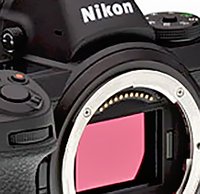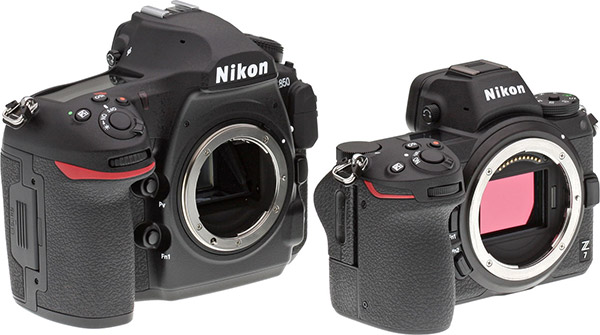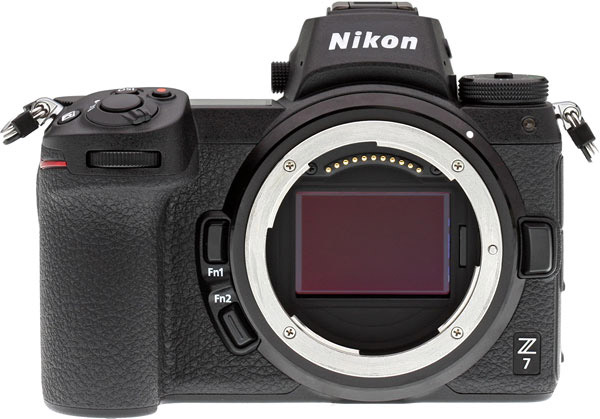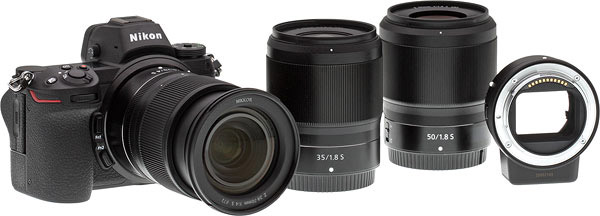Nikon starts new chapter by unveiling the Z mount system and full-frame Z6 and Z7 mirrorless cameras
posted Thursday, August 23, 2018 at 1:01 AM EDT
Nikon Z7 Preview and Hands-on Video • Nikon Z6 Preview

After numerous teases, Nikon has finally drawn back the curtains and unveiled their brand-new full-frame mirrorless camera system, complete with an all-new and radically-redesigned Z mount. The cameras share a lot of similarities, so let's first look at the common traits of both models.
The Nikon Z6 and Nikon Z7 share the same body, which is significantly smaller and lighter than the popular Nikon D850 full-frame DSLR. The cameras feature a 0.5-inch OLED electronic viewfinder with 3.69 million dots and impressive 0.8x magnification, a tilting 3.2-inch touchscreen display, a familiar and ergonomic control layout, in-camera image stabilization, weather-sealing, 4K UHD video recording, a new EXPEED 6 image processor, hybrid autofocus and new backside-illuminated full-frame image sensors.

Nikon D850 (left) versus Nikon Z7 (right).
At the heart of the new mirrorless system is the Nikon Z mount, which sports a larger diameter and significantly shorter flange distance than the Nikon F mount, which has been in use since 1959. The Z mount has a flange distance of only 16 millimeters, which will allow Nikon to develop Nikkor Z lenses with maximum apertures as fast as f/0.95. Alongside the two new cameras, Nikon has announced three "S-Line" Nikkor Z lenses: the Nikkor Z 35mm f/1.8 S, Nikkor Z 50mm f/1.8 S and Nikkor Z 24-70mm f/4 S, the lattermost of which is the new kit lens for both cameras. In addition, the Nikon Z6 and Z7 are fully-compatible with Nikon F mount lenses, including offering full AF/AE functionality with over 90 lenses. You pair up the lenses onto the new bodies with the new Nikon FTZ adapter.

What separates the Nikon Z6 and Z7? The primary differences are image sensors and performance. The Nikon Z6 has a new 24.5-megapxiel backside-illuminated (BSI) full-frame CMOS image sensor with 273 on-chip phase-detect autofocus points. With the 24.5-megapixel sensor and EXPEED 6 processor, the Z6 can shoot at up to 12 frames per second. The Nikon Z7, on the other hand, uses a new 45.7-megapixel BSI full-frame sensor. The higher-megapixel Z7 has a whopping 493 autofocus points on its sensor. In both cases, the autofocus area covers approximately 90 percent of the image sensor both horizontally and vertically. With more megapixels though comes less speed, as the Z7's fastest shooting speed tops out at 9 frames per second.

For a complete rundown of the new cameras and lenses, including a hands-on video showcasing the Nikon Z7 and gallery images, click the links below! And stay tuned to Imaging Resource for more coverage of the exciting new Nikon Z6 and Nikon Z7 this week and beyond.
• Nikon Z6 Preview • Nikon Z7 Preview, Hands-on Video & Images •
• Nikkor Z 35mm f/1.8 S • Nikkor Z 50mm f/1.8 S •
• Nikkor 24-70mm f/4 S •
• • •
|
Your pre-orders help this site!
Based on our hands-on experience with it, the new Nikon Z system should prove to be a
Ordering through the links below will cost you nothing, but will be a Nikon Z7 Body Only - $3,396.95: Adorama | Amazon | B&H Nikon Z7 + 24-70mm F4 Kit - $3,996.95: Adorama | Amazon | B&H Nikon Z6 Body Only - $1,996.95: Adorama | Amazon | B&H Nikon Z6 + 24-70mm F4 Kit - $2,596.95: Adorama | Amazon | B&H Nikkor Z 35mm F1.8 S Lens - $846.95: Adorama | Amazon | B&H Nikkor Z 50mm F1.8 S Lens - $596.95: Adorama | Amazon | B&H Nikkor Z 24-70mm F4 S Lens - $996.95: Adorama | Amazon | B&H Nikon FTZ Adapter - $249.96: Adorama | Amazon | B&H Thank you! |
